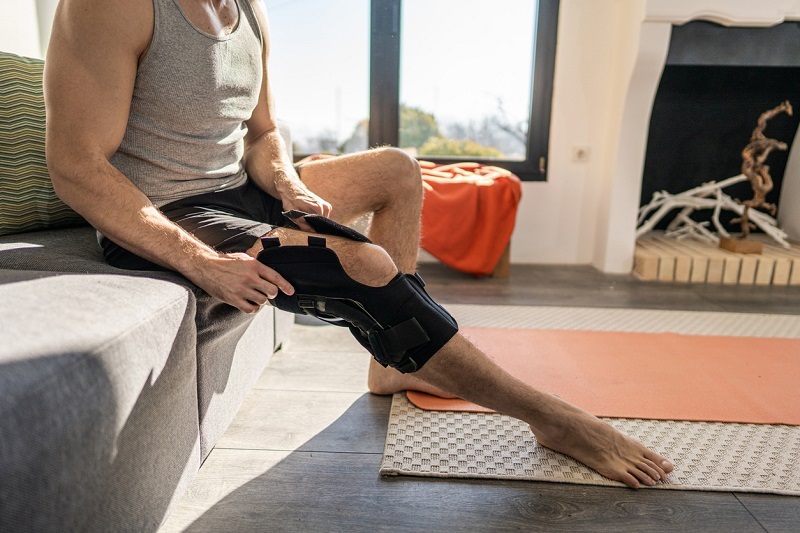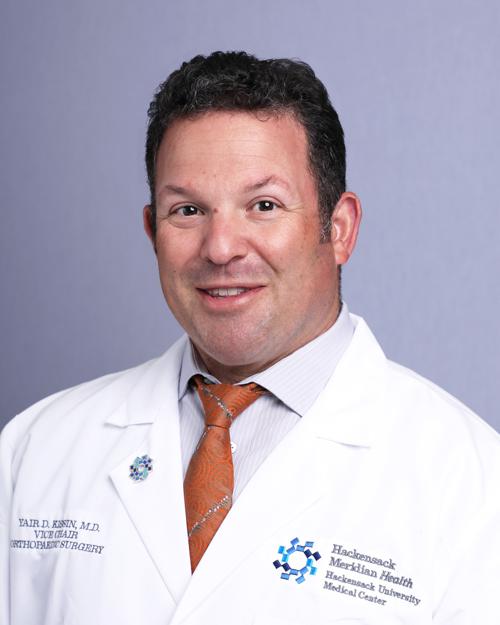ACL Tear Recovery: Surgery & Treatment Options

November 27, 2023
What treatment options are available for an anterior cruciate ligament (ACL) tear? Surgery and nonsurgical treatments are both options.
Which treatment is right for you? That depends on a variety of factors.
When suggesting treatments, doctors take into consideration things like:
- The severity of your injury
- How physically active you are and what sports you play
- How old you are, although age is only a number! Many people are very active later in life and want to remain so
- Your desire to engage in athletic pursuits
- Your desire to avoid surgery
“For an older person who doesn’t play sports, nonsurgical solutions may be preferred,” says Yair Kissin, M.D., vice chair of the Department of Orthopedic Surgery at Hackensack University Medical Center. “But young, competitive athletes typically seek surgical options, so they can play sports again.”
A good rule to go by is that if someone wants to play twisting sports (like soccer, basketball, football, etc.), they generally need a functional ACL. But sports like running on even ground, closed chain exercises at the gym or biking can often be done with an ACL deficient knee.
It is important to remember that ACL surgery is not done to prevent arthritis in the future, but rather to prevent the knee from slipping out, which in turn causes more damage to the knee and therefore risks arthritis sooner.
Symptoms of an ACL tear
The ACL ligament acts as a stabilizer between the femur and tibia. When it tears, people experience:
- Pain
- Swelling
- Knee instability
- A feeling that they cannot “trust” the knee
People often tear their ACL by planting and pivoting their leg:
- Running quickly, then stopping suddenly
- Changing directions suddenly while running quickly
- Jumping, then landing awkwardly
- Colliding with another athlete while in play
Nonsurgical treatment options for ACL tears
The initial treatment for an ACL tear is rest, ice, compression and elevation.
Doctors may initially recommend nonsurgical treatments. For some patients, these treatments may be enough, while others opt for surgery.
“Nonsurgical treatment may be the right choice for those patients who are less active, participate in non-twisting sports or have significant arthritis in their knee,” Dr. Kissin says.
“Age is not the most important factor; there are many patients in their 50s and 60s, with minor arthritis in their knee and who are very active, such as those who downhill ski at a high level. Nonsurgical treatment may not suffice in these cases so a thorough discussion is very important,” he adds.
Nonsurgical treatment options for an ACL tear include:
- Anti-inflammatory medication. This type of medication helps to reduce pain and swelling (inflammation).
- Crutches. They help to keep your weight off of the injured knee in the early period after injury.
- A knee brace. Wearing a supportive brace on the affected knee may provide enough stability for some, although the evidence is not clear.
- Physical therapy. Strengthening the supporting muscles around the knee, such as one’s CORE, hip rotators, medial quadriceps (called the VMO), can help provide greater stability to the knee. Single leg exercises are key to achieving a sense of balance and trustworthiness as well.
Surgery Options for ACL Tears
Patients who tear their ACL playing vigorous sports and want to continue playing are often candidates for surgery. Surgery is aimed at restoring stability and full range of motion to the knee without pain, but does carry the risks of any surgical procedure.
When a patient requires surgical treatment, a number of procedures are available. Ask your doctor which procedure is best for your personal circumstances.
- Typically, the gold standard today is where the ACL isreconstructed or replaced with anothertendonwhich takes the place of the torn ACL as it heals, allowing the knee to regain stability.
- The tendon may come from elsewhere in your body, called autograft, or from a donor/cadaver, called allograft.
- ACL repair, or sewing back the torn ligament, fell out of favor due to historically poor results, but is making a resurgence, especially as new procedures are showing promising results. One such procedure is BEAR (Bridge Enhanced ACL Restoration), which is offered at Hackensack University Medical Center.
Instead of traditional ACL reconstruction, which uses a tendon from another part of the patient's body to fix the tear, BEAR uses a spongy collagen implant that is infused with a patient’s blood. The surgeon positions it between the two torn ends of a ruptured ACL during outpatient surgery. The implant is designed to hold and protect the patient’s blood in the gap between the ends of the ACL and promotes the formation of a clot.
Within eight weeks, the BEAR Implant is resorbed and replaced with a person’s natural cells, collagen, and blood vessels. The new tissue continues to rebuild itself and strengthen over time.
Today, most every ACL surgery is done arthroscopically (minimally invasively). Patients go home the same day that they receive this outpatient procedure.
- After surgery, doctors prescribe anti-inflammatory medication to reduce swelling.
- They recommend crutches to take pressure off ofthe knee and sometimes will advise to use a knee brace.
- Patients are also encouraged to begin physical therapy within one week of surgery in order to start regaining motion, eventually their strength and finally more sports specific movements.
How long does an ACL tear take to recover?
Recovery after ACL surgery is a process that requires time, patience and hard work on the part of the patient.
“Well before surgery is performed, I make sure to discuss recovery in great detail with my patients.” Dr. Kissin says. “It is important that patients know that the process takes 9 to 12 months at a minimum in order to return to twisting sports.”
“Full recovery is defined based on strength, stability and landing mechanics to be within 10% of the patient’s uninjured knee,” says Dr. Kissin. “With true commitment, a majority of patients return to their sports and are satisfied with the surgery.”
Clearance is a multistep process, and involves good collaboration and communication between your surgeon and physical therapist. The Hackensack Meridian Fitness & Wellness Center offers an ACL return to play program, which can start as early as three months post-op and has patients working with physical therapists and athletic trainers on their specific sports, so that by 9 to 12 months, most patients are ready to play.
Next Steps & Resources:
- Meet our source: Yair Kissin, M.D.
- To make an appointment with Dr. Kissin, or a doctor near you, call 800-822-8905 or visit our website.
- Learn more about our sports medicine treatments.
The material provided through HealthU is intended to be used as general information only and should not replace the advice of your physician. Always consult your physician for individual care.







